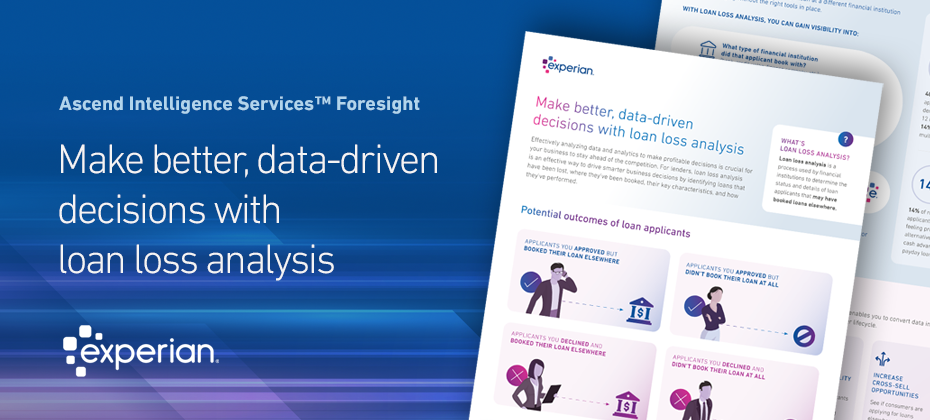
Credit scores hold the key to many aspects of our financial lives. Whether qualifying for a mortgage, insurance, or a smartphone plan, financial institutions rely on credit reports — a document detailing how responsibly a person has used credit accounts in the past — to decide if they should approve your financing application.
However, here’s the problem: because today’s scoring system leans heavily on a person’s credit history to generate a credit score, it leaves out large segments of the United States population from accessing credit. According to a recent Oliver Wyman report, an estimated 28 million U.S. consumers are considered ”credit invisible,” while another 21 million are deemed “unscorable,” meaning they don’t have the types of accounts that have been traditionally used to generate a credit score. Using the traditional credit-scoring formula, certain populations, such as communities of color and low-income consumers, are left behind.
Now, times are changing. A modern approach to credit scoring can significantly improve the financial inclusion of millions of U.S. consumers and correct past and present inequities. Tapping into advanced technologies that leverage expanded data assets can produce powerful results.
A cycle of exclusion: The limitations of conventional credit scoring
A big part of the problem lies with how credit scores are calculated. Between payment history and length of accounts held, a consumer’s credit history accounts for 50 percent of a FICO credit score — the credit score used by 90 percent of top lenders for credit decisions. In other words, the credit system rewards people who already have (or can get) credit and penalizes those that cannot or don’t yet have credit.
For those who do not have credit, their financial behaviors — such as timely rental and utility payments, bank account data and payday loan installment payments — may not get reported to credit bureaus. As a result, consumers without a credit history may appear as credit invisible or unscorable because they don’t have enough tradelines to generate a score. But they also can’t get credit to improve their score. It creates a cycle of exclusion that’s hard to break.
Who gets left behind?
According to the latest research, the limitations on the traditional credit scoring system disproportionately impact certain communities:
- Low-income: 30 percent of those in low-income neighborhoods are credit invisible, and 16 percent are considered unscorable, compared with just 4 percent and 5 percent, respectively, in upper-income neighborhoods.1
- Communities of color: 27 percent of Black and 26 percent of Hispanic consumers are either credit invisible or unscorable, while only 16 percent of white consumers are.1
- Immigrants: People who have recently arrived in the United States can lack a credit history here, even if they may have had one in their home country. Meanwhile, undocumented immigrants, who don’t have a Social Security number, can find it difficult to get a credit card or use other financial services.
- Young adults: 40 percent of credit invisibles in the U.S. are under the age of 25,1 with 65 percent of 18- to 19-year-olds lacking a credit score.
Being labeled unscorable or credit invisible can hinder participation in the financial system and prevent populations from accessing the socioeconomic opportunities that go with it.
Why are certain individuals and communities excluded?
There are often complex — and valid — reasons for why many consumers are deemed unscorable or credit invisible. For example, newcomers may appear to be credit invisible because haven’t yet generated a credit history in the U.S., although they may have a solid score in their home country.
Young consumers are also a common category of unscorable or credit invisible people, largely because they haven’t acquired credit yet. Only 35 percent of 18- to 19-year-olds have a credit score, while 91 percent of 25- to 29-year-olds do. However, those who can quickly get a credit history typically come from wealthier households, where they can rely on a creditworthy guarantor to help them establish credit.
Finally, some consumers have had negative experiences with the financial system. For instance, a prior default can make it difficult to access credit in the future, which can result in an extended period without credit, eventually leading to being labelled unscorable. Others may distrust the mainstream financial system and choose not to participate.
Underpinning all this are racial disparities, with Black and Hispanic consumers being classified as unscorable and credit invisible at significantly higher rates than white and Asian consumers. According to the Consumer Financial Protection Bureau (CFPB), Black and Hispanic people, as well as low-income consumers, are more likely to have “scant or non-existent” credit histories.
Financial inclusion is an equity issue
Traditional credit scoring places big barriers on certain communities. Without access to credit, marginalized communities will continue to face challenges. They will lack the ability to purchase property, secure business and/or personal loans and deal with financial emergencies, further widening the wealth gap. Since credit scores are used to decide loan eligibility and what interest rate to offer, those with low or no credit rating tend to pay higher interest rates or are denied desired loans, which compounds financial difficulty. The impact is profound: a significant percentage of the population struggles to access basic financial services as well as life opportunities, such as financing an education or buying a home.
Without the ability to generate a credit score, unscorable or credit invisible consumers often turn to less-regulated financial products (such as payday loans or buy now pay later agreements) and pay more for these, often locking them in a vicious cycle. Consumers who are credit invisible or unscorable often end up paying more for everyday transactions. They may be required to put up hefty deposits for housings and utilities. Auto and homeowners insurance, which use credit score as a factor in setting rates, may be more expensive too. Consider how much this could impede someone’s ability to save and build generational wealth.
Financial inclusion seeks to bring more consumers into the financial system and enable access to safe, affordable financial services and products. With the right technology on your side, there are solutions that make it easier to do so.
Tap into technology
Banks, credit unions and other lending institutions are well positioned to move the needle on financial inclusion by embracing expanded definitions of creditworthiness. By seeking out expanded FCRA-regulated data with wider sources of financial information, financial institutions can find a vast untapped pool of creditworthy consumers to bring into the fold.
Technology makes achieving this goal easier than ever. New credit scoring tools, like Lift Premium™, can give lenders a more complete view of the consumer to use for credit decisioning. It combines traditional credit data with expanded FCRA-regulated data sources, helping lenders uncover more creditworthy consumers.
Lift Premium can score 96 percent of U.S. consumers, compared to just 81 percent that conventional scoring systems do now. By applying machine learning to expanded data sets, Lift Premium can build a fuller and more accurate view of consumer behaviors. Moreover, the 6 million consumers whose scores are now considered subprime could be upgraded to prime or near-prime by analyzing the expanded data that Lift Premium uses.
The opportunity presented by financial inclusion is significant. Imagine being able to expand your portfolio of creditworthy borrowers by almost 20 percent.
The last word
With a renewed focus on social justice, it’s no surprise that regulators and activists alike are turning their attention to financial inclusion. A credit-scoring system that allows lenders to better evaluate more consumers can give more people access to transparent, cheaper and safer financial products and the socioeconomic benefits that go along with them. New models and data assets offer additional data points into the credit scoring system and make it possible for lenders to expand credit to a greater number of consumers, in the process creating a fairer system than exists today. Early adopter lenders who embrace financial inclusion now can gain a first-mover advantage and build a loyal customer base in a competitive market.
Learn more Download white paper


